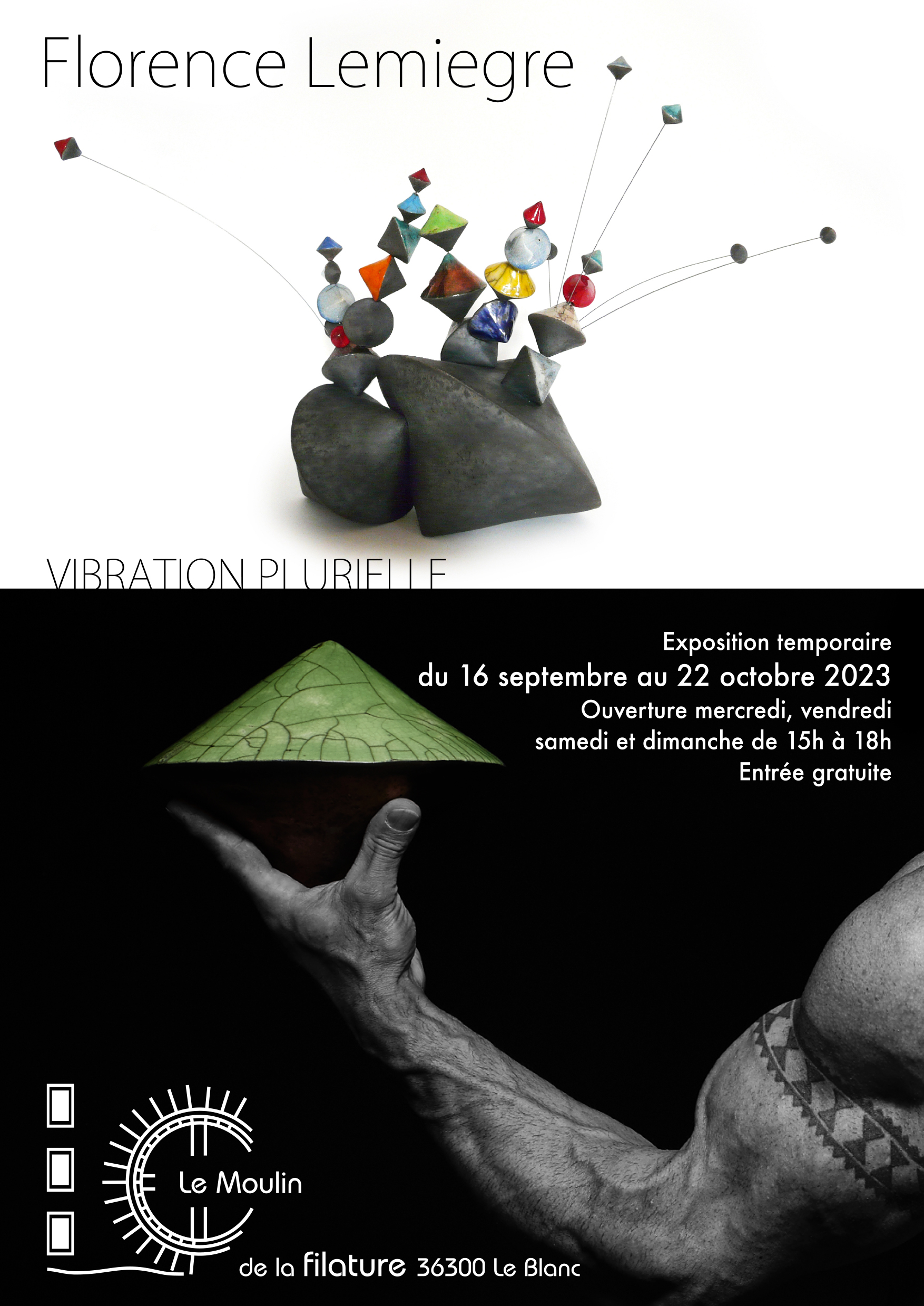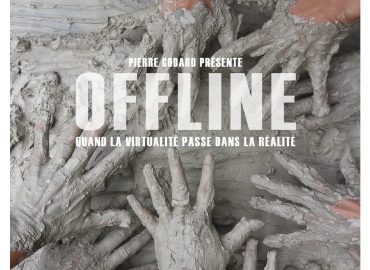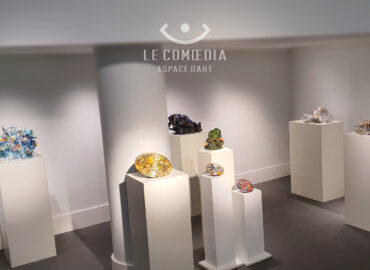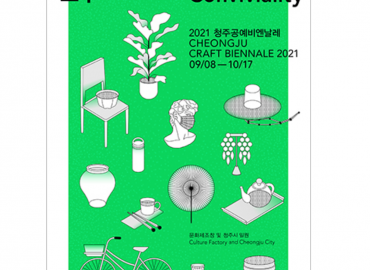PERSONAL EXHIBITION “VIBRATION PLURIELLE” – MOULIN DE LA FILATURE – LE BLANC – Indre – France
• September 16 to October 22, 2023
• Opening on September 15 at 6:30 pm
Florence Lemiegre, guest artist at the Moulin de la filature in Le Blanc, presents a solo exhibition of some sixty ceramic sculptures and photographs from September 16 to October 22.
Under the title “Vibration Plurielle“, the exhibition invites the public to experience it for themselves. The sculptor, ceramist and visual artist celebrates the material of clay. She highlights the subtle variations of interference between balance and imbalance that run through all her work. In a refined aesthetic of masterful craftsmanship, in which matter exuberantly brings color to life, visitors are invited to meditate on perception, through a deep feeling that is exercised both physically and unconsciously.
The artist has chosen to present three of her “Culbutos” and “Culbutos Serendipity” universes, with their pure lines and shapes, oscillating, swaying and hesitating before finding an anchoring point. Through these sculptures, the artist evokes stability and instability, strength and fragility, the better to highlight the duality inherent in our wounds, as well as our rebirths. According to the artist, these works are also “allegorical, as a symbolic graphic representation of our potential for resilience.”
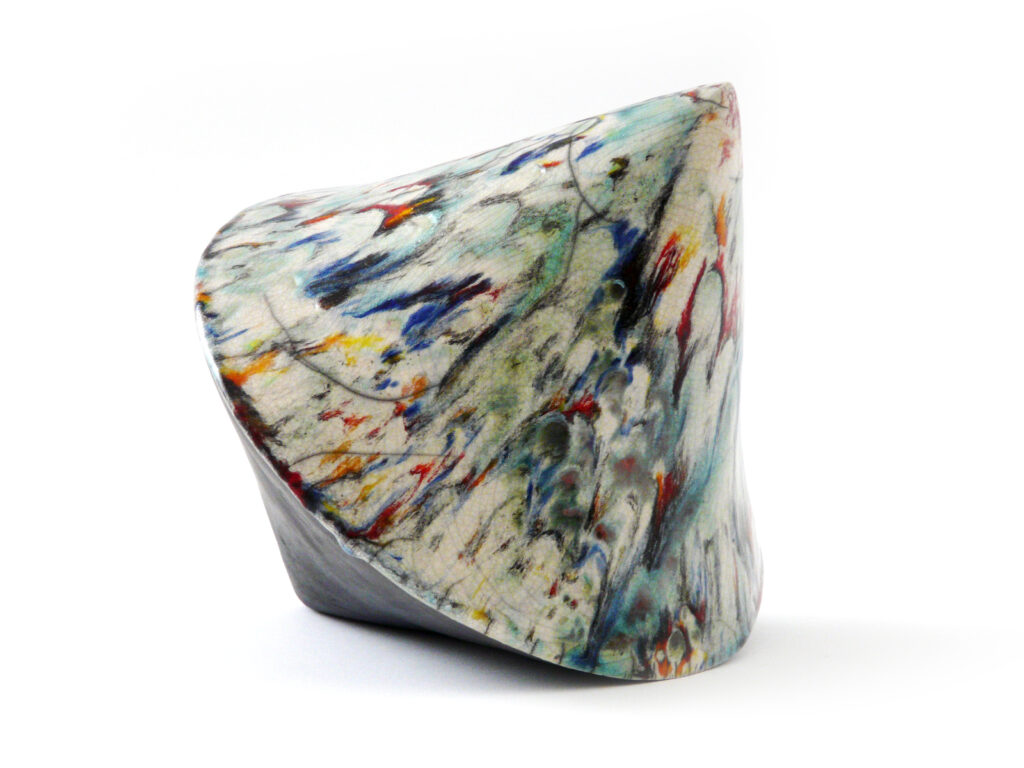
Contemporary ceramic sculpture by Florence Lemiegre
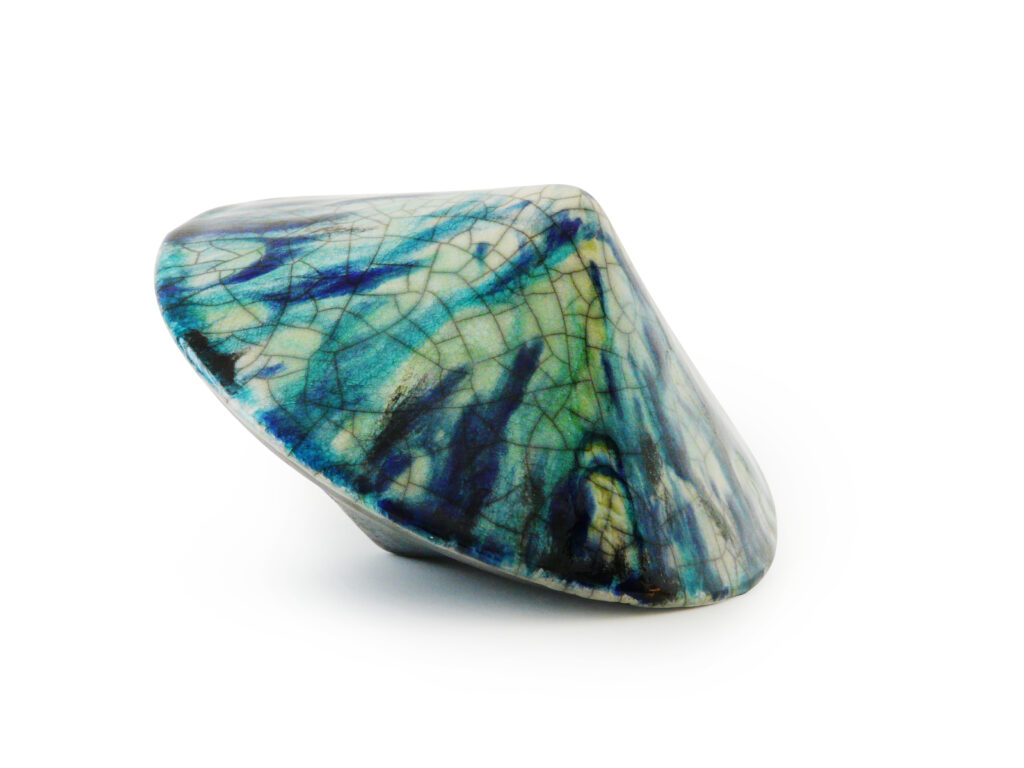
Contemporary ceramic sculpture by Florence Lemiegre
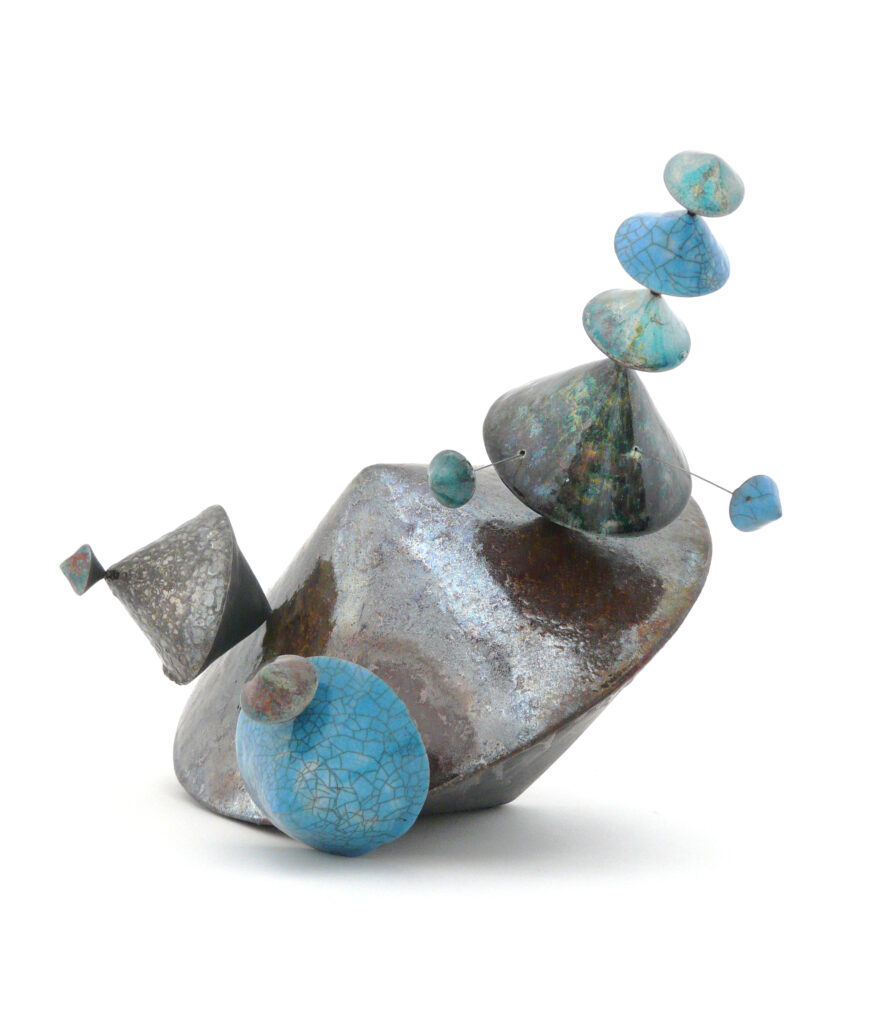
Contemporary ceramic sculpture by Florence Lemiegre
The world of “Noli me tangere” initiates a dialogue on biodiversity and our relationship with nature. It crystallizes the unspeakable beauty of our planet, both dreamlike and powerful. Beauty that nevertheless conceals impalpable wounds and cracks. From the bowels of these sculptures, tiny vibrations and oscillations sometimes escape. Like a silent, almost interior melody, they are akin to imperceptible breaths: the earthenware or stoneware work then seems to come alive. Testifying to the fertility, but also the vulnerability, of our earth and its oceans, it ultimately tells us a story. One in which nature regains its rights and the balance of all its ecosystems.
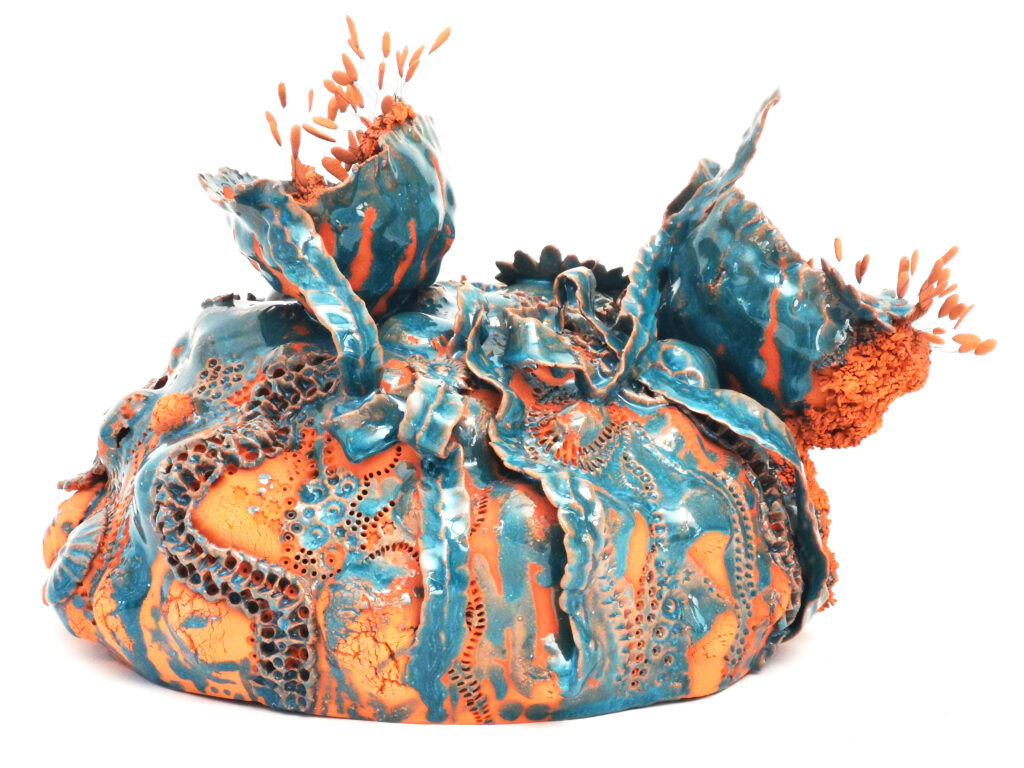
Contemporary ceramic sculpture by Florence Lemiegre
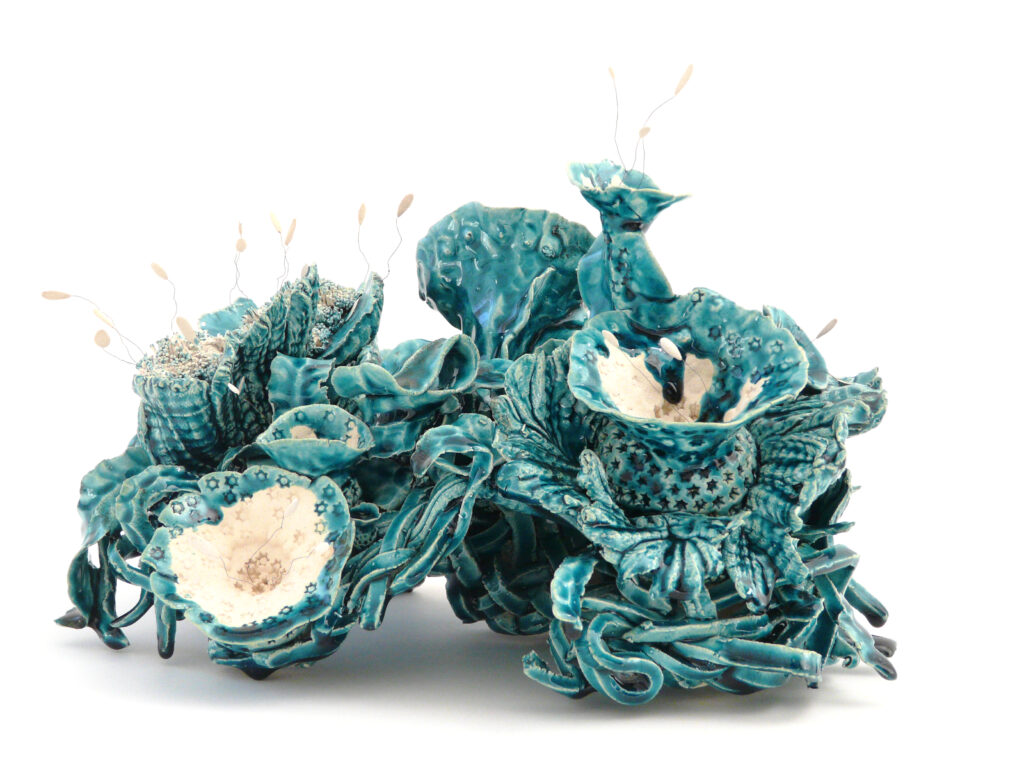
Contemporary ceramic sculpture by Florence Lemiegre
Among the works presented, the viewer will also discover some fifteen photographs from an artistic project entitled “Sculpture in space & mise en abyme“, which the artist is presenting to the public for the first time.
Many artists, primarily Rodin, but also Brancusi, Bourdelle, Giacometti, Louise Bourgeois, Didier Vermeiren and Richard Wentworth, have raised the question of the support for their work. By its very nature, sculpture needs a support, and the pedestal’s primary function is to act as an intermediary between the object and the ground, thereby enhancing its value. How high should a sculpture be placed, what kind of support, what kind of material? These are just some of the questions raised by the artist’s installations.
The pedestal is a foreign element that makes the sculpture autonomous, situates it in space and enhances its value, while the base is an integral part of it. Once constituted as a whole, the base and sculpture have their own scale, generate their own space and can therefore be moved.
The author’s intention here is to turn the traditional approach on its head: “this piece of functional, commonplace furniture tends to become one of the main elements of the work of art. Here, the pedestal is a living model, whose shapes and movements respond to those of the sculpture for which it is intended. It becomes inseparable from the sculpture. In this way, it can contribute to the development of the sculpture’s meaning, until it itself becomes part of the work.
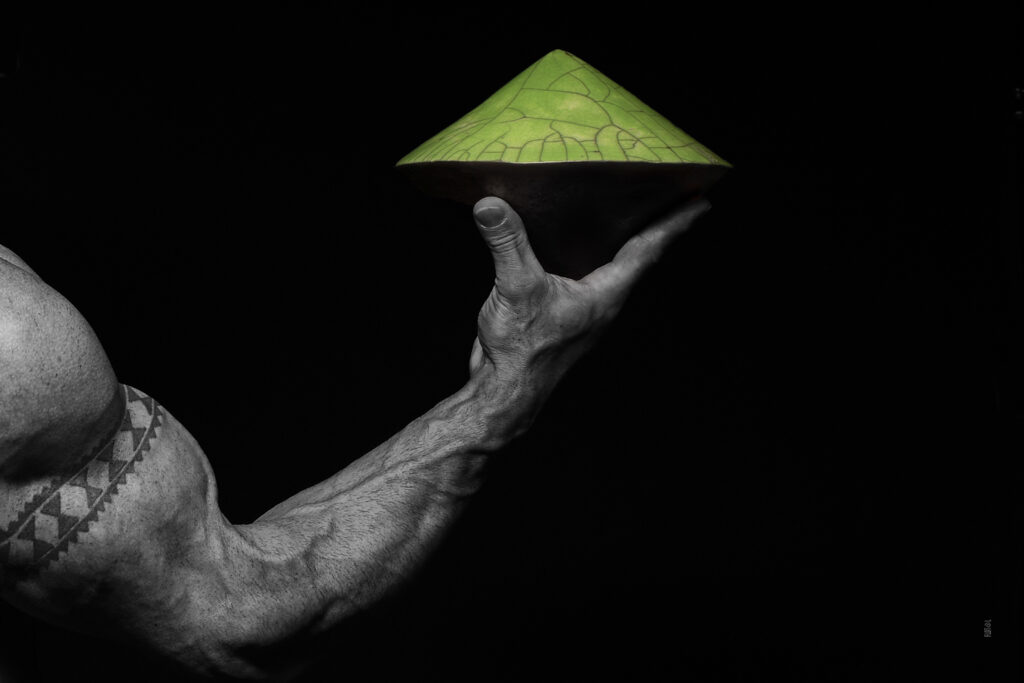
Contemporary photography by Florence Lemiegre
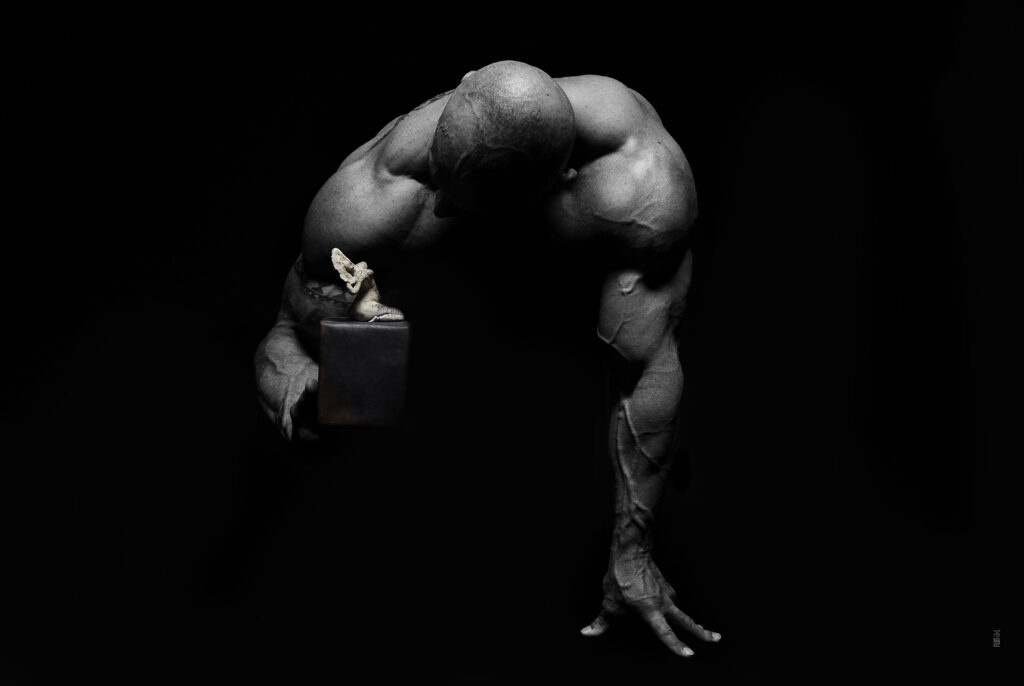
Contemporary photography by Florence Lemiegre
Beyond this initial reflection on the work’s support and placement in space, the artist confides that she felt it would be interesting to go further in her artistic approach and integrate her explorations of the mise en abyme that fascinates her. She explains: “This does not always boil down to the simple ‘work within the work’, but can also offer a variety of interweavings whose configuration can quickly gain in complexity. With this photographic work, I’m exploring the ‘infinite’ mise en abyme, when the nested fragment maintains a relationship of similarity with the work that includes it, and itself enshrines a fragment, and so on”.
This immersion in all the works of Florence Lemiegre testifies to the variety of contemporary creation and the tremendous vitality of ceramic sculpture.
A little history:
The old Moulin du Blanc, built in the 15th century, is located on the left bank of the Creuse River. In Gallo-Roman times, a ford at the mill site allowed passage of the Roman road to Poitiers. Next to the mill, the tall brick chimney and the building above it (a linen spinning mill) bear witness to an industrial past which, from 1840 to 1860, made Le Blanc the 2nd largest industrial town in the département. At the beginning of the 19th century, the mill was rebuilt and transformed into a sifting mill, followed by the construction of a water-powered flax spinning mill in 1836. The spinning mill disappeared in 1860, ruined by the massive influx of cotton. It was replaced for a time by a rag and straw mill, then a match factory. In 1876, the mill began grinding wheat again. In 1920, the municipality installed a turbine to generate electricity.
Today, the Moulin de la Filature in the upper town of Le Blanc has been restored and offers an international program of artists.
“Vibration Plurielle” exhibition curated by Pascal Szkolnik.
Moulin de la filature
Rue du Moulin, 36300 Le Blanc
Opening hours
Open Wednesday, Friday, Saturday and Sunday, 3pm to 6pm.
Free admission
